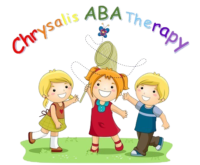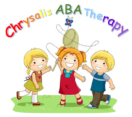Autism Spectrum Disorder or ASD is a condition wherein the individual has difficulties in communicating and socializing with other people. Hence, people tend to see them as antisocial which is entirely not true. According to experts, people who are on the spectrum are very friendly and are excited to mingle with other people; it’s just that they do not know how to do it. Moreover, common symptom includes repetitive actions or behavior like jumping, flapping of hands, uttering a phrase or a sound and arranging an object. The repetitive behavior is one of the core symptoms of Autism, and this somehow prevents them from engaging into a typical conversation. The question is, how would the parents know that their kid/s has already the spectrum? Where would they go initially? How can they help their kid/s to have a healthy and functional life? These are the questions that we often face when we are overwhelmed by the situation.
Five things to remember when dealing with kids in the spectrum
- Symptoms usually appear as early as 18 months. Most kids in the spectrum have challenges in speaking their first word. According to research, early intervention provides satisfying results. You can visit a developmental pediatrician to let your child be assessed, and from there, you will be advised on what to do.
- In dealing a child with Autism, parents and other family members should be aware of what the spectrum all about. We need to realize that ASD is a not a disease that can be cured with medications for a few days or weeks. It is a neurobehavioral condition that requires a lifetime support from therapists (speech, behavioral, etc.) and family.
- As they say, when you meet a kid with Autism, you met one kid with ASD. The symptoms and the behavior of one child are different from the other kids with ASD, so as a parent or a family member, we should not compare our kid to other kids’ milestone during the therapy.
- The difference between a tantrum and a meltdown. Most parents are baffled when their child is crying and rolling on the floor. As a parent, we should know the difference between tantrums from a meltdown to help us deal with the situation especially whenever we are in the public area. A temper tantrum is a frustration from your child who was not able to get what he likes (e.g. a toy). While a meltdown is due to a sensory overload which is caused by noise from the people around, vehicular sounds, enclosed area, crowded place, bright color, clothing, and others. Sensory overload is a distress to kids with autism because their brain is flooded with many things going around, it has a hard time interpreting them.
- The intervention in dealing with a tantrum and a meltdown. When your child is throwing a temper tantrum, always remember the acronym SIN which stands for Safety, Ignore, and No bribe. Just like the other kids, a temper tantrum is a form of frustration for children who were not able to get what they want, and it is a typical reaction. The meltdown needs a deeper understanding and observation for the parents to know what is the stimulus that causes it. Once it is recognized, you have to remove the child from it (crowd), calm them by hugging and avoid the additional stimulus.
According to American Autism Association, the family may experience distress too in dealing with their kid/s in the spectrum and getting a community support from an ASD group is necessary. The only way to prepare the family is awareness and proper education about the spectrum.


